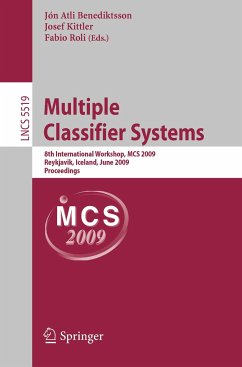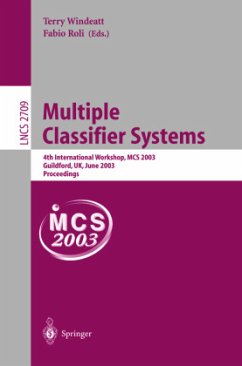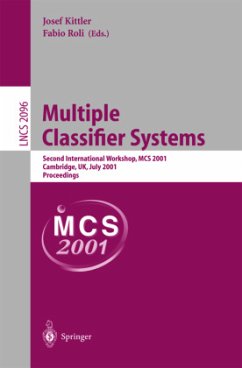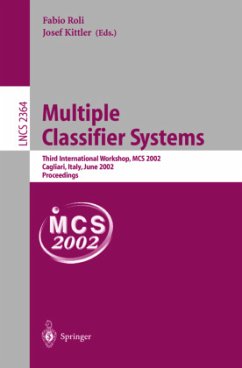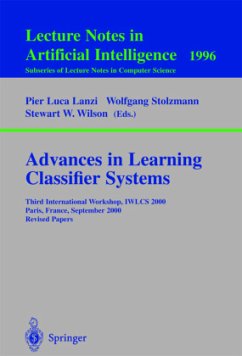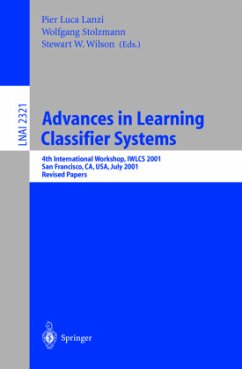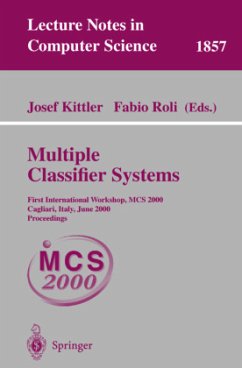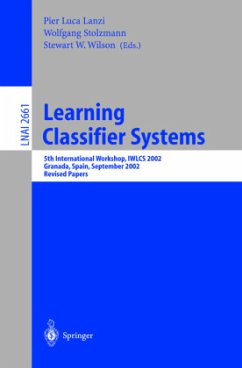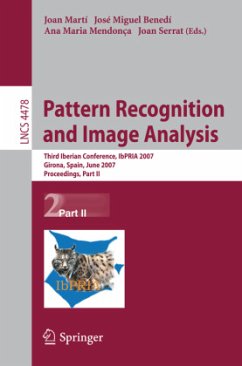
Multiple Classifier Systems
6th International Workshop, MCS 2005, Seaside, CA, USA, June 13-15, 2005, Proceedings
Herausgegeben: Oza, Nikunj C.; Polikar, Robi; Kittler, Josef; Roli, Fabio

PAYBACK Punkte
20 °P sammeln!
The belief that a committee of people make better decisions than any individual is widely held and appreciated. We also understand that, for this to be true, the members of the committee have to be simultaneously competent and comp- mentary. This intuitive notion holds true for committees of data sources (such as sensors) and models (such as classi?ers). The substantial current research in the areas of data fusion and model fusion focuses on ensuring that the di?- ent sources provide useful information but nevertheless complement one another to yield better results than any source would on its...
The belief that a committee of people make better decisions than any individual is widely held and appreciated. We also understand that, for this to be true, the members of the committee have to be simultaneously competent and comp- mentary. This intuitive notion holds true for committees of data sources (such as sensors) and models (such as classi?ers). The substantial current research in the areas of data fusion and model fusion focuses on ensuring that the di?- ent sources provide useful information but nevertheless complement one another to yield better results than any source would on its own. During the 1990s, a variety of schemes in classi?er fusion, which is the focus of this workshop, were developed under many names in di?erent scienti?c communities such as machine learning, pattern recognition, neural networks, and statistics. The previous ?ve workshops on Multiple Classi?er Systems (MCS) were themselves exercises in information fusion, with the goal of bringing the di?erent scienti?c commu- ties together, providing each other with di?erent perspectives on this fascinating topic, and aiding cross-fertilization of ideas. These ?ve workshops achieved this goal, demonstrating signi?cant advances in the theory, algorithms, and appli- tions of multiple classi?er systems. Followingits?vepredecessorspublishedbySpringer,thisvolumecontainsthe proceedings of the 6th International Workshop on Multiple Classi?er Systems (MCS2005)heldattheEmbassySuitesinSeaside,California,USA,June13 15, 2005. Forty-two papers were selected by the Scienti?c Committee, and they were organized into the following sessions: Boosting, Combination Methods, Design of Ensembles, Performance Analysis, and Applications.






